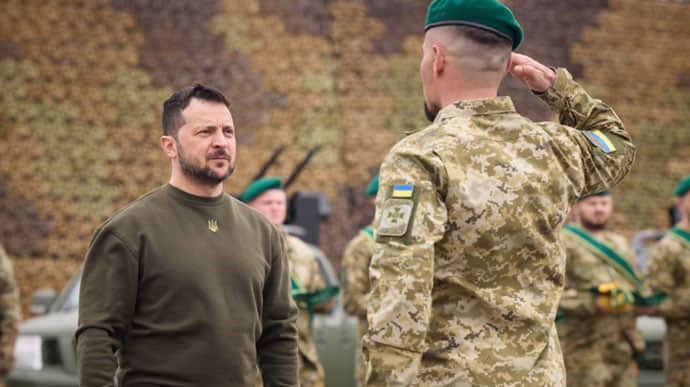86% of Ukrainians believe that Zelenskyy is effective Supreme Commander-in-Chief

Since the beginning of Russia's full-scale invasion, the number of Ukrainians who consider President Volodymyr Zelenskyy to be an effective Supreme Commander-in-Chief has increased 2.5 times and now stands at 86%. Source: results of a survey conducted by the Kyiv International Institute of Sociology on 26 May - 5 June Quote: "After the large-scale invasion, Ukrainians have radically changed their views and now 86% believe that Volodymyr Zelenskyy is working effectively as commander-in-chief."
Details: Sociologists have noted that respondents were asked a similar question in November 2021 and January 2022. At that time, only 36% and 32% of respondents respectively believed that Zelenskyy could work effectively as the supreme commander-in-chief and organise the country's defence.
Advertisement:14 months after the full-scale invasion, the vast majority of the population in all regions of Ukraine believe that Zelenskyy is working effectively as commander-in-chief. The survey was conducted from 26 May to 5 June.
A total of 984 respondents living in all Ukrainian regions (except for the Autonomous Republic of Crimea) were interviewed by conducting telephone interviews based on a random sample of mobile numbers. The survey was carried out with adult citizens of Ukraine (aged 18 and older) who resided in Ukraine at the time of the study (within the territory controlled by the Ukrainian authorities until 24 February 2022). The sample did not include residents of the territories temporarily not controlled by the Ukrainian authorities until 24 February 2022 (the Autonomous Republic of Crimea, the city of Sevastopol, and certain districts of Donetsk and Luhansk oblasts), and the survey was not conducted with citizens who left the country after 24 February 2022.
We have launched English Twitter!
Follow us!
Technically, under normal circumstances, the statistical error of such a sample (with a probability of 0.95 and taking into account the design effect of 1.1) did not exceed 3.4% for indicators close to 50%, 3% for indicators close to 25%, 2.1% for indicators close to 10%, and 1.5% for indicators close to 5%. In wartime, in addition to this formal error, a certain systematic error is added. However, sociologists believe that the results obtained still retain a high degree of representativeness and allow for a fairly reliable analysis of public sentiment.
Journalists fight on their own frontline. Support Ukrainska Pravda or become our patron!